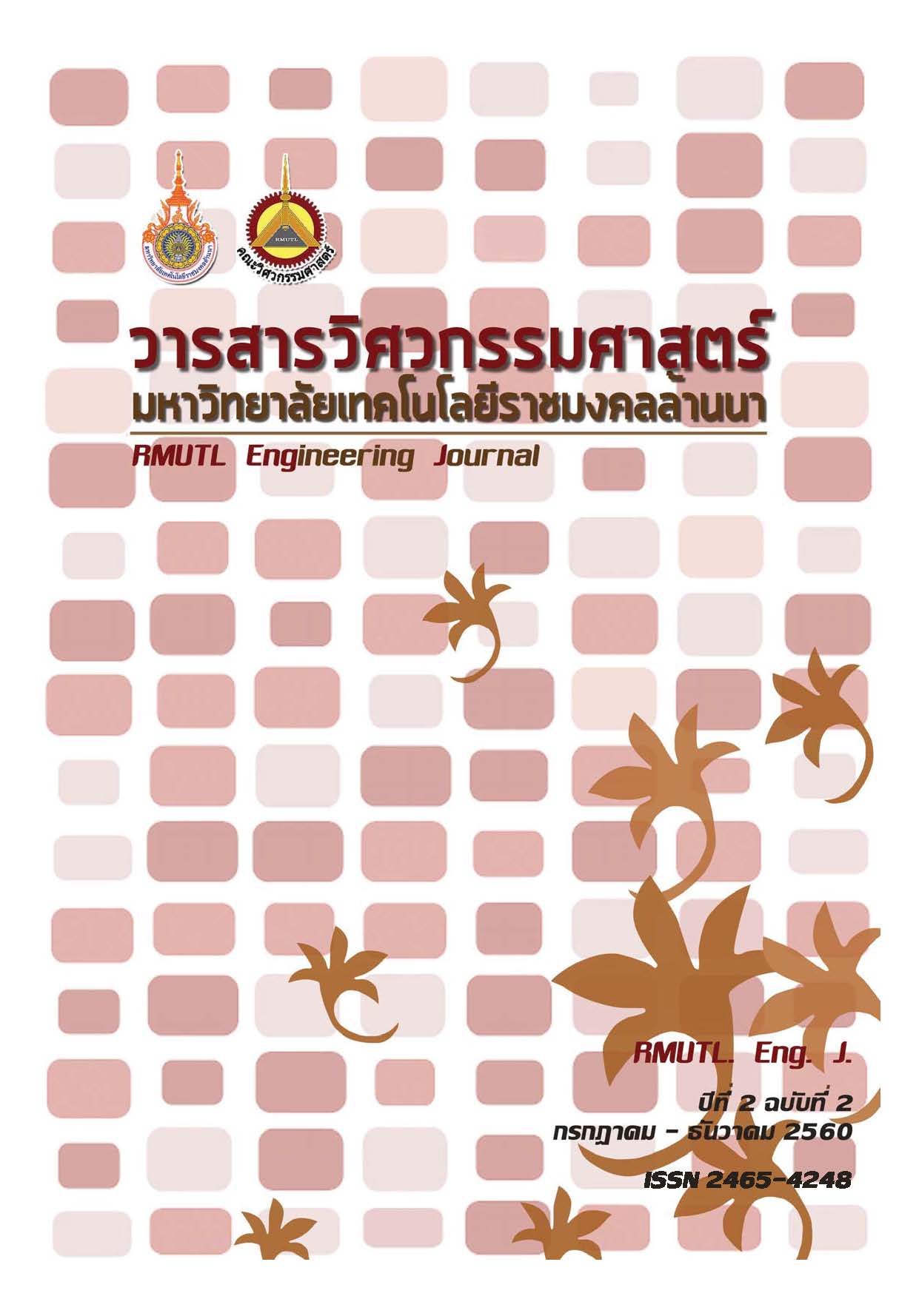Object Vibration Tracking in Silent Video for Sound Extraction
DOI:
https://doi.org/10.14456/rmutlengj.2017.13Keywords:
Sound Extraction, Magnification, Object Vibration, Silent Video, Object TrackingAbstract
This research proposed the steps of voice synthesis from videos, which contain a moving object. Video images with the suitable resolution are processed to locate the vibrating object. Then, the signals are magnified in order to easily detect the change in position. The moving positions of the object in each frame are converted to sound. The initial testing shows that the vibration of object in a video can be converted to sound with frequency close to the actual frequency of the source. This process of sound extraction can be used to assist in the investigation of a crime or incident.
References
2. Moses J.M. and Trout K.P., A Simple Laser Microphone for Classroom Demonstration, The Physics Teacher, Vol. 44, December 2006.
3. The visual microphone: Passive recovery of sound from video, Washington Post, 2014. [Online]. Available: https://www.washington post.com/video/c/embed/098665de-1c0c-11e4 -9b6c-12e30cbe86a3. [Accessed 8th August 2016].
4. Ait-aider O., Bartoli A., and Andreff N., Kinematics from lines in a Single rolling shutter image. In Computer Vision and Pattern Recognition, 2007. CVPR’07. IEEE Conference on, IEEE, 1–6.
5. Meingast M., Geyer C., and Sastry S., Geometric models of rolling-shutter cameras. arXiv preprint cs/0503076. NAKAMURA, J. 2005. Image sensors and signal processing for digital still cameras. CRC Press.
6. Wadhwa N., Rubinstein M., Durand F., and Freeman W.T., Phase-based video motion processing, ACM Transactions on Graphics (TOG), Vol. 32, No. 4, 2013.










